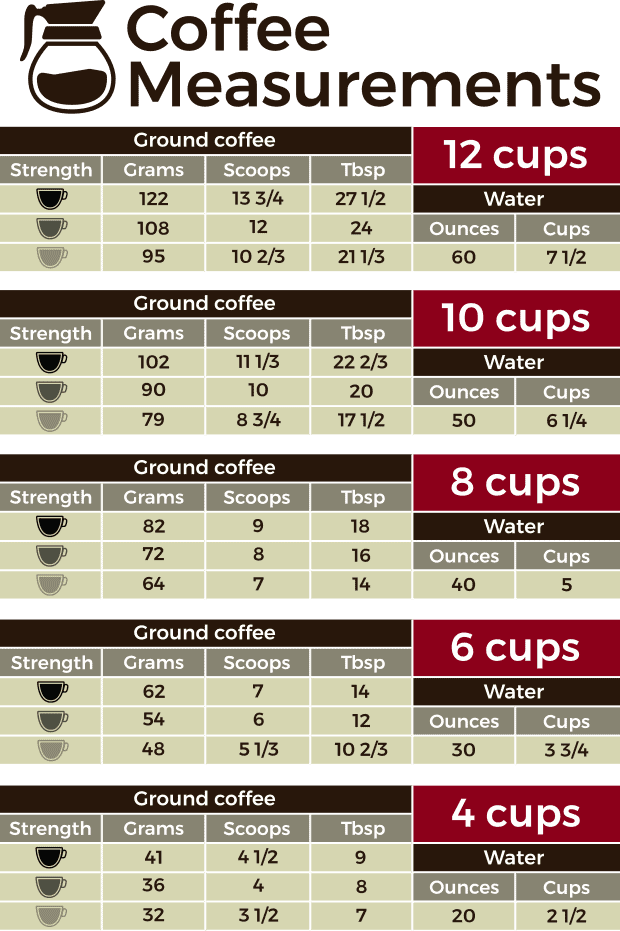
Table showing various tablespoon measurements converted to cups. For example, 1 cup can be written as 1 c or 1 C. Cups can be abbreviated as c, and are also sometimes abbreviated as C. The cup is a US customary unit of volume. One cup is equal to 236.588 milliliters, but in nutrition labeling, one cup is rounded to 240 milliliters. The cup should not be confused with the metric cup or the teacup, which are different units of volume. The conversion factor from tablespoons to cups is 0.062500000000211, which means that 1 tablespoon is equal to 0.062500000000211 cups: 1 tbsp 0.062500000000211 cup To convert 24 tablespoons into cups we have to multiply 24 by the conversion factor in order to get the volume amount from tablespoons to cups. It is important to measure flour correctly in low-fat bread making because when we reduce the fat (which tenderizes it), we don't want to dramatically increase the flour (which toughens it).The cup is a unit of volume equal to 16 tablespoons or 8 fluid ounces. Additionally, 1 tablespoon is equal to 0.5 ounces or 14.8 milliliters.

Lightly spoon flour into graduated measuring cup, and level off with straight edge of knife. One tablespoon equals 3 teaspoons, so 10 tablespoons would be equal to one-third of a cup. NEVER pack flour down into the measuring cup or tap it excessively. In most recipes, flour is supposed to be measured straight from the canister or package (the flour needs to be airy, if it seems compact, stir it in the container before measuring it). 3/4 cup, 6 fluid ounces, 12 tablespoons, 177 ml 7/8 cup, 7 fluid ounces, 14 tablespoons, 207 ml 1 cup, 8 fluid ounces/ 1/2 pint, 16 tablespoons, 237 ml. To measure packed brown sugar, pack sugar down lightly with back of spoon, then level off. Most recipes usually call for certain amounts of packed brown sugar.

Eight Tablespoons is equivalent to zero point five Cups. To find out how many Tablespoons in Cups, multiply by the conversion factor or use the Volume converter above.

Simply spoon it in and level off with the straight edge of a knife. The conversion factor from Tablespoons to Cups is 0.062500000000211. Most sugar can be measured in a graduated measuring cup. If it has not been packed that way, pack margarine or butter into measuring spoon or measuring cup and level off to measure. Usage of fractions is recommended when more precision is needed. In the United States, the wrapping usually has tablespoons and teaspoons clearly marked. IngredientsĮach 1/4 pound stick of margarine or butter measures 1/2 cup or 8 tablespoons. Liquid or Volume Measures (approximate) 1 teaspoon, 1/3 tablespoon 1 tablespoon, 1/2 fluid ounce, 3 teaspoons 2 tablespoons, 1 fluid ounce, 1/8 cup, 6. The larger measures can double as mixing bowls.Ĭome in sets of four or five (1 tablespoon, 1 teaspoon, 1/2 teaspoon, 1/4 teaspoon and sometimes 1/8 teaspoon). They come in glass or plastic, with the amounts indicated in cups, ounces, and milliliters. They are widely available in 1, 2, 4, and 8-cup measures. If you need a little more accuracy, multiply the number of. For example, 6 tablespoons would be equal to 0.375 cups (6/16). To convert 6 tablespoons into cups, divide the number of tablespoons by 16 the resulting number will give you how many cups are in 6 tablespoons. Measuring cups that look like little pitchers with a lip/spout to aid in pouring. All you need is a standard measuring cup and some basic math skills.

They are excellent for measuring dry ingredients because they can easily be leveled off. They are usually made of plastic or metal and come in sets of four or five (1 cup, 3/4 cup, 1/2 cup, 1/3 cup, and 1/4 cup). We've got you covered with our handy dandy conversion charts made just for cooking. Wondering how many oz in a cup? How many tablespoons in a cup? What about how many teaspoons in a tablespoon? What is the difference between a fluid (fl) ounce (oz) and a dry oz?


 0 kommentar(er)
0 kommentar(er)
